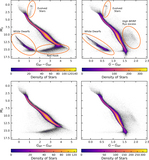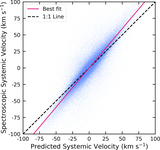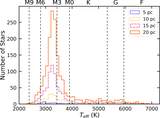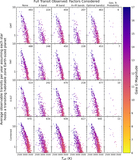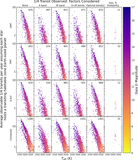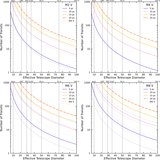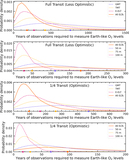Image Details
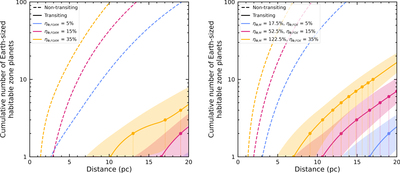
Caption: Figure 6.
Cumulative estimates of the number of Earth-sized habitable-zone planets as a function of distance for planets in both transiting (solid lines) and nontransiting geometries (dashed lines). (Left) Scenario (1): η ⊕ is the same for FGK and M dwarfs, assuming three different values for η ⊕: 5%, 15%, and 35%. (Right) Scenario (2): η ⊕ is 3.5 times higher for all M dwarfs than the baseline η ⊕ values from (1). To aid the eye, we have added circles and extended vertical dashed lines on each of the transiting curves to show at which distance we expect to find one or more Earth-sized habitable-zone planets. For these estimates, we used 1739 single stars out to 20 pc. There are notably significantly more nontransiting Earth-sized habitable-zone planets, and within 10 pc, we can expect to find at least 10–100 of these planets.
Copyright and Terms & Conditions
© 2023. The Author(s). Published by the American Astronomical Society.


